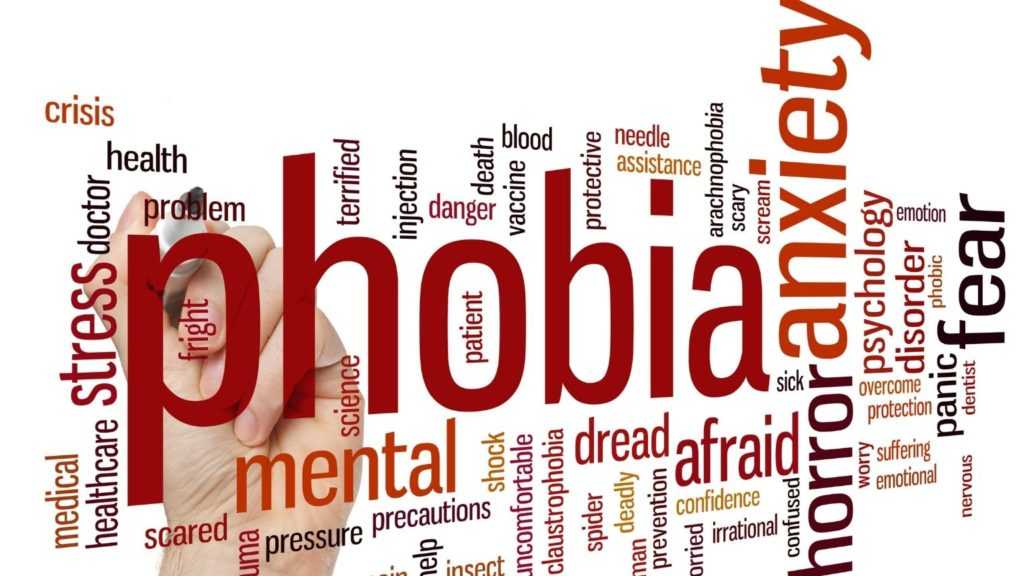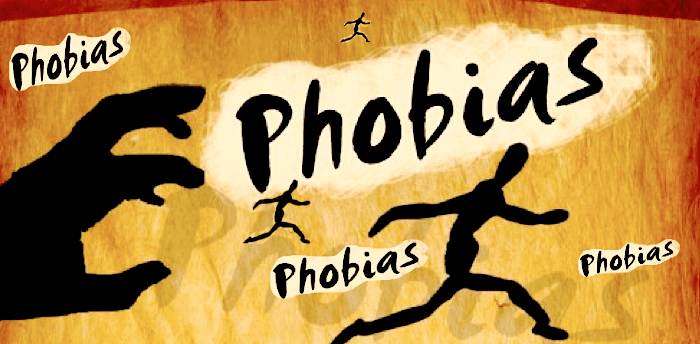People with different kinds of phobias often acknowledge their fear is irrational and that no real danger is present, but most of them require help in order to defeat & overcome their phobia.
What Are Phobias?
Phobias are illogical & unreasonable fears of an activity, situation, or thing. This fear is severely bad as it limits a person’s activities and life. Many people with phobias likely run out of their way to refrain from the things they fear. An estimated 6 million people suffer from phobias. Women are twice as likely to suffer from them compared to men. It is estimated that up to 30% of people suffer from phobias. The percentage of the population who experience phobia, is estimated to be 7% to 13% in western countries. They are likely un-reported. Unlike general anxiety disorders, a phobia is usually linked to something specific.


There are three types of phobias, according to the latest version of the WORLD HEALTH ORGANIZATION(WHO)-
-
- Social phobia ( social anxiety disorder)
- Specific (or simple) phobia
- Agoraphobia ( fear of being alone in a public place)
Each type of phobia can vary in severity from mild to a severe, debilitating & cripple disorder. The earlier a phobia develops and the longer you wait to treat the phobia, the more difficult it becomes to recover from it. Without treatment, a person is sometimes left trying to avoid their extreme feared situation for the rest of their lives. These fears can interfere with your work, school, and personal relationships. Seek medical advice and Find The Best Doctor near your area in Pakistan, if you have a fear that prevents you from leading a normal life.
What Causes Phobias?
Genetic and environmental factors may cause phobias. Children who have a close relative with an anxiety disorder are at risk for developing a phobia or It can transfer from Parents to their offspring. Distressing or often some horrifying events such as nearly drowning can bring on a phobia. Exposure to confined spaces, extreme heights, and animal or insect bites can all be sources of phobias. People with ongoing medical conditions or health issues often have phobias. There is a high percentage of people developing phobias after traumatic brain injuries. Depression is also connected to phobias.
Different Types of Phobias
There are more than 100 different phobias. Here are a few of the most common.
Agoraphobia.
Agoraphobia is a fear of places or situations that you cannot escape from. People with agoraphobia fear being in large crowds or trapped outside of their own home. They will often avoid social situations & get-togethers and stay inside their homes.
Social Phobia
Social phobia is also connected to as “social anxiety disorder.” This is an extreme situation that can lead to self-isolation. It can be so severe that the simplest daily interactions, such as ordering at a restaurant or answering the routine telephone call, can cause panic. Those with social phobia will often go out of their way to avoid public situations.
Specific Phobias
Many people dislike & run from certain situations or objects, but they have a true phobia, the fear must interfere with your daily life. Some of the most common include the following-
Glossophobia:
It is the performance anxiety or the fear of speaking in front of an audience or sometime bunch of people. People with this phobia may have severe physical symptoms when they even think about being in front of a group of people.
Acrophobia:
It is the fear of heights. People with this phobia will always avoid mountains, high bridges, or the higher floors of buildings. Symptoms include vertigo, dizziness, sweating, and feeling as if you will pass out or lose your consciousness.
Claustrophobia:
The fear of enclosed or tight spaces. Severity of claustrophobia can be especially disabling if it prevents you from riding in cars or elevators/lifts.
Aviatophobia:
The fear of flying. Some people with claustrophobia may also experience fear of flying or they may avoid airplane journeys.
Dentophobia:
Fear of the dentist or dental procedures is very normal & can be often seen. This phobia generally develops after an unpleasant experience at a dental clinic. It can be harmful, if it prevents you from obtaining needed dental care. So, feel free to Book an appointment with the best dentist in Lahore.
Hemophobia:
Symptoms of Hemophobia
-
- Anxiety
- Nausea
- Vomiting
- Fainting
It is completely normal for people to feel apprehensive in seeing blood, but it is when you allow that fear to consume you is when it becomes unhealthy. They may fear the sight of their own blood as well as the blood of others.Extreme Hemophobics are fearful of even printed pictures of blood or simply the thought of blood. Hemophobia is a very serious phobia and if not monitored, can lead to other issues.
-
- Arachnophobia: Fear of spiders.
- Cynophobia: Fear of dogs.
- Ophidiophobia: Fear of snakes.
Nyctophobia:
Fear of the nighttime or darkness is called Nyctophobia. This phobia almost always begins as a normal childhood fear. When it progresses past pre-adulthood.
Feel free to discuss anything regarding Mental health issues on Our Marham Forum & for further guidance Please Consult best psychiatrists in Lahore & Other Main Cities Of Pakistan.

